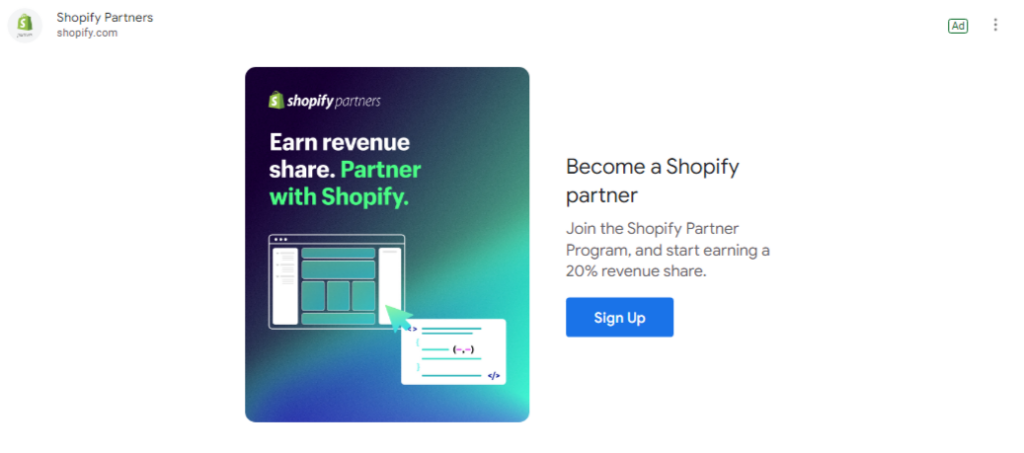Finding affiliates is one of THE crucial steps in building a successful affiliate program.
You can build a stunning affiliate program landing page. You can offer a higher commission. You can apply every CRO technique there is to convert potential affiliates.
Yet, no one will join your affiliate program if they don’t know about it.
In this article, we’ll show you how to find affiliates who’ll bring you all the benefits that come from affiliate marketing – brand awareness, high-converting traffic, more sales, and more revenue. What’s more, you’ll also discover some best practices that’ll help you convert potential affiliates into affiliates.
Excited to learn? Let’s begin!
How To Find Affiliates To Sell Your Products?
These are the most straightforward (or perhaps the only) ways to find affiliates:
1. Convert customers into affiliates
As rightly said by Lisa Masiello, happy customers are your biggest advocates and can become your most successful sales team.
There’s no one more qualified to recommend your product (or service) than your customers. They know your product, they brought your product, and they had the reason to buy it. In fact, they might already be promoting you by word of mouth.
By converting customers into affiliates, you incentivize them to communicate their reasons for buying from you and why they like your brand. Moreover, you will be able to attribute sales to people if they are your affiliates (because they’ll use their trackable link); there’s no attribution in the traditional word of mouth.
Now, there are two ways to find affiliates from your customer base:
1. Automatically convert all customers into affiliates: This is what Social Snowball does for Shopify ecommerce brands — everyone is an affiliate. Ideally, it’s recommended for D2C brands because all customers know potential customers (friends, family, social circle).

2. Invite customers to become affiliates: If your brand is not for anyone and everyone, invite customers to become affiliates. Then, filter & accept affiliate entries. To invite entries, you can:
- Send a simple email announcing the affiliate program,
- Trigger a proactive live chat message when a return visitor/customer lands on your website,
- Announce & promote it to your social media followers,
- Ask NPS promoters in post-survey Thank you emails to get maximum conversions.
Related: See these referral program examples to understand the power of incentivizing customers for sales.
2. Join an affiliate network
An affiliate network acts as an intermediary between you and your affiliates.
If you sign up with an affiliate network, they’ll list you on their merchants’ directory. As a result, when an affiliate on their network searches through the directory, they might discover your products.
For example, assume your run a baby products store, and a potential affiliate runs a baby products-related Instagram page. Now, if they want to monetize their Instagram with affiliate products, they’ll go on an affiliate network — say ShareASale — and search for related terms.
There, they might find your brand and consider joining your program. For instance, the potential affiliate can search “baby jewelry” on ShareASale, find Mountain Moverz, and join their program:

Note: Creating your own affiliate program (with an affiliate app/SaaS) gives you flexibility and costs comparatively less. On the other hand, an affiliate network can cost as much as $3000+ to join, + there’s a recurring monthly fee and an extra 20-30% commission on commission per sale.
3. Invite social media influencers
One of the ways social media influencers monetize their audiences is through affiliate marketing. They talk about the products they like and ask their followers to buy the product (if they want to) through their affiliate links. You can reach out to such pages/accounts and ask them to try your products and join your affiliate program.
Let’s continue with the previous example. Say you sell baby jewelry. You can go on Instagram and search for a relevant hashtag like #babyjewelry and find potential affiliates:

Here’s the profile of the account that posted the photo in the middle:

It seems like they are a potential affiliate. Now, just DM or email the page owner to see if they’d be interested in joining your affiliate program.
Rinse & repeat.
4. Try influencer seeding
Influencer seeding is the practice of sending products to many relevant micro-influencers (10,000–50,000 followers) and nano-influencers (<10,000 followers).
Most businesses use influencer seeding for the obvious benefit: Getting shoutouts from some of the “many” influencers. However, you can use it to onboard relevant affiliates as well — here’s how:
Typically, businesses send a personalized card with a message that indirectly or directly asks the influencer to share their experience and feedback. The card increases the probability of influencers promoting the product to their followers. Still, many influencers don’t bother promoting because there’s no actual monetary benefit.
In your card, you can mention your affiliate program to the influencers. You can ask them to join it to earn a commission if they like the product and decide to share it with their followers. Doing so kills two birds with one stone:
- The influencers who don’t bother promoting because there’s no monetary benefit consider promoting (because there is a monetary benefit now).
- And, of course, you get new affiliates for your program.
5. Find affiliate niche sites
Niche sites are websites with content targeted to a specific group of people. Find sites whose that “specific group of people” is your target audience.
You can reach such sites via affiliate networks, of course. Unfortunately, however, only a fraction of potential affiliates are part of a single affiliate network. Others, you’ll have to find.
The simplest way to find affiliate niche sites/bloggers is through Google search. For example, if you sell dog food, you can search for a keyword like “best low carb dog food” and identify sites that promote others’ products for a commission.

Then, simply reach out and ask.
6. Contact “best affiliate programs” sites
The niche sites promote the product or service.
Then, there are meta affiliate sites that teach affiliate marketers about affiliate marketing. One of the things such sites publish is listicles on the best affiliate programs in [Niche]. For example, AuthorityHacker is a meta affiliate marketing site that publishes articles like these:

When affiliate marketers want to monetize their site/page with affiliate products, they refer to sites like these to find the best affiliate program.
You can reach out to them, introduce your affiliate program, and ask if they can add your program to the list.
7. Join relevant communities
You can also find affiliate marketers in communities related to affiliate marketing or your niche. Look for relevant Facebook groups, subreddits, etc., and promote your program if it’s allowed.
For example, here’s a post under r/affiliatemarketing where 100+ companies promoted their affiliate programs:

This community has 90k+ members (many of them are affiliate marketers across categories). So naturally, many marketers discovered new affiliate programs, and a % of them probably joined the suitable ones, like this user u/josalek:

8. Run ads
Though only a few companies practice this, running ads to your affiliate landing page can be a fast and efficient way to reach potential affiliate marketers. For example, Supermetrics runs search ads for relevant keywords:

You can too:
Search advertising
Like any normal person, affiliate marketers turn to search engines like Google to find everything. So when they want to monetize their website or social media with affiliate links, they search for relevant keywords like “best affiliate program for [Niche/Sub Niche]” to find worthy affiliate programs.
You can bid for such keywords and get in front of potential affiliates.
Social media ads
Pretty much all the strategies to find affiliates in this list only help in getting potential affiliates to the affiliate landing page. It doesn’t guarantee the affiliate will sign up for the program—many will visit and leave for whatever reasons.
However, the fact that they visited the page means they’re likely interested in an affiliate program (yours or similar to yours). You can run social media retargeting ads to stay in front of them at all times.
Other ads
You can run any other ad that might get you in front of relevant affiliate marketers. For example, Shopify runs emails ads to likely retarget people who visit their affiliate program page:

9. Reverse-engineer your competitors
If you have an affiliate program, it’s likely your competitor does too. So, find and approach the affiliates they are working with and ask them if they’d be interested in joining your program.
Here are a couple of ways to reverse engineer:
- To find influencers, search for your competitor brand’s hashtag. Influencers typically use hashtags when they post about anything.
- To find affiliate sites, search for related queries and add your competitor’s brand name alongside the search. Similarly, you enter your competitor’s domain in a tool like SEMRush or Ahrefs and see the sites linking to them and promoting their products.
10. Hire an affiliate recruitment agency
If you don’t have time to find affiliates, you can pay an affiliate recruitment agency to do it for you.
A good agency will know all the best practices and, more importantly, have relevant experience to run affiliate recruiting campaigns efficiently. They also have access to a list of relevant affiliates they have contacted in the past, which will help you get the initial boost fast.
11. [Bonus] Hire an affiliate manager
Because you are reading this “how to find affiliates” article, we assume you’re likely a small business owner or manager who wants to recruit affiliates by yourself to keep affiliate marketing-related costs at a minimum.
We get the point, but if you are well-established and are serious about expanding through the affiliate channel, we recommend you hire an affiliate manager.
Finding and recruiting affiliates is part of the affiliate manager’s job. Other than that, they will also vet affiliate applications, negotiate deals with top affiliates, manage relationships with affiliates, help new affiliates, ensure affiliates get paid on time, and identify growth opportunities for the affiliate program.
Best Practices To Convert Potential Affiliates Into Affiliates
With all the abovementioned methods, you’ll succeed in attracting potential affiliates to visit your affiliate program page. But what next? Will they join? Well, you can just hope + follow these affiliate marketing best practices for higher conversions:
- Make your affiliate program landing page scannable: The first thing a potential affiliate wants to know about your program is the commission rate, cookie period, and when and how you send the commission. Therefore, highlight those things.
- Ensure your affiliate program landing page is searchable: Potential affiliates will assume you don’t have an affiliate program if they don’t find it in obvious places like on “[Brand Name] + affiliate program” on Google search or in your website footer menu. Therefore, you must ensure it’s easily findable.
- Set competitive commissions: If your commissions aren’t up to mark, they’ll leave without even reading other details.
- Keep your affiliate form minimal (and, of course, mobile-friendly): This depends on what you sell. For example, if you are a D2C ecommerce brand, you don’t need much information to accept affiliates. You can create a simple form like this (that affiliates can fill in under a minute):

On the other hand, a company like SEMRush that sells B2B tools will need details like affiliate’s company information, where they’ll promote it, how they’ll promote it, their phone number, etc., to ensure only the most relevant affiliates join the program.
Here’s our guide on how to create effective affiliate sign-up forms.
- Keep them motivated: Once someone joins the affiliate program, you don’t want them to leave. So do everything to motivate your affiliates. For example, you can share promotion tips, give banners they can use on their site(s), pay early, offer tiered commissions, etc.
- Have products/services worth associating with: No one wants to promote inferior products and lose their credibility in the process. So, first, focus on having a good product and service, and then create your affiliate program.
Good luck!
Above, we shared the best ways to find & recruit affiliates for your affiliate program. Hopefully, you found some interesting ideas on how to find affiliates.
Give all a try and let us know which worked best for you.
Good luck!
If you don’t have an affiliate program yet:
Start your 30-day free trial with Social Snowball, and power your Shopify store with affiliate marketing.




